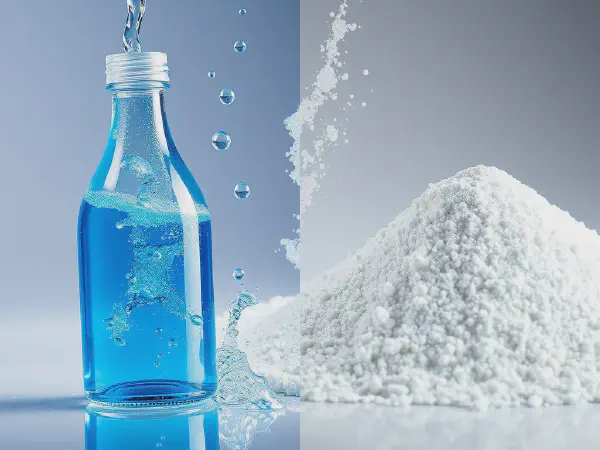Liquid vs Powder Drain Cleaners: Which is Best for Hair?

Understanding Drain Cleaners: Types, Effectiveness, and Best Practices
Drain cleaners play a crucial role in maintaining the plumbing systems of our homes. They are specially formulated products designed to break down and dissolve clogs that often plague our pipes and drains. From hair and grease to soap scum and food particles, various types of debris can lead to blockages that disrupt the normal flow of water. The array of drain cleaners available in the market can be categorized primarily into two types: liquid and powder drain cleaners. Each type has its own advantages and best-use scenarios, making it essential for homeowners to understand their options and how to use them effectively.
Liquid drain cleaners are commonly used for their ease of application and quick results. They typically contain potent chemical compositions that create a reaction, generating heat to help soften and dislodge blockages. Meanwhile, powder drain cleaners are engineered to be more granular, allowing for a deeper penetration into the clog. They often take longer to work as they need time for the powder to dissolve and begin breaking down the obstruction. Regardless of the type, the effectiveness of drain cleaners largely hinges on the nature of the clog, proper usage, and adherence to safety guidelines.
When it comes to the effectiveness of drain cleaners, understanding their mechanism is critical. Liquid drain cleaners usually act faster compared to their powder counterparts, often providing results in a matter of minutes. However, their efficacy can be limited depending on the type of clog they encounter. For example, hair clogs in bathroom sinks are usually better resolved with specific formulations targeting hair breakdown. Conversely, powder-dissolving drain cleaners may be more effective for grease or organic matter, as they take time to break down tightly packed debris. As such, choosing the right type of drain cleaner is essential for optimal results.
Safety considerations are paramount when using drain cleaners. Many chemical drain cleaners contain harsh substances that can pose health risks if mishandled. Liquid options, for instance, are often more caustic, posing potential dangers such as burns, respiratory issues, or chemical exposure. Powder drain cleaners, while generally perceived as safer, can also have adverse effects if not used correctly. Understanding these risks is necessary for any homeowner looking to engage in effective and safe drain maintenance.
Cost is another important aspect to consider when selecting drain cleaners. Liquid drain cleaners tend to be slightly more expensive than powders, but their convenience and rapid action can justify the extra cost for some users. On the other hand, powder cleaners may require larger quantities for severe clogs, which can affect long-term costs. An economical approach would involve knowing your plumbing habits and the types of clogs that frequently occur in your home, allowing for targeted purchases and the best cost efficiency over time.
Effectiveness of Drain Cleaners
The effectiveness of drain cleaners varies significantly based on their composition and the type of clog being treated. Liquid drain cleaners tend to work quickly, often showing results within minutes as they penetrate the clog with powerful chemicals. Conversely, powder drain cleaners may take longer – sometimes requiring hours – to fully dissolve the clog. That said, the formulation of each cleaner can greatly influence its performance. Liquid drain cleaners are often ideal for more immediate problems, while powder cleaners are better suited for recurring or more stubborn blockages.
Certain types of clogs respond more effectively to particular drain cleaners. For instance, hair clogs often require products specifically designed to dissolve hair and organic matter. Conversely, grease clogs are typically better treated with formulations that break down fats and oils. Understanding what type of clog you are dealing with can increase the chance of successfully resolving the issue with the appropriate cleaner, whether it be liquid or powder.
A comparative analysis of chemical composition shows that liquid cleaners typically contain sodium hydroxide or sulfuric acid, which expedite the breakdown of hair and organic matter via heat generation and chemical reactions. In contrast, many powder drain cleaners incorporate enzymes or bacteria that feed on the organic debris, effectively digesting clogs over time. This differentiation in chemical composition highlights why certain cleaners perform better against specific clogs, especially hair-based ones that may not respond as well to standard liquid formulations.
Safety Considerations
Health risks associated with both liquid and powder drain cleaners must not be overlooked. Liquid cleaners, often containing harsher chemicals, can lead to skin burns, respiratory issues, or eye damage if proper precautions are not taken. In contrast, powder cleaners, while less dangerous in terms of immediate contact, can still cause irritation and should be handled with care. Utilizing protective gear such as gloves and goggles is recommended when using either type to mitigate these health risks.
The environmental impact of drain cleaning methods is an increasingly important consideration. Many liquid drain cleaners contain chemicals that can be harmful to aquatic life and ecosystems once they enter the water supply. Conversely, some powder cleaners are marketed as eco-friendly alternatives, utilizing naturally occurring enzymes and bacteria that pose minimal risk to the environment. When selecting a drain cleaner, it's crucial to evaluate environmental factors and opt for products that align with sustainable practices.
To safely use both liquid and powder cleaners, adhere to the product’s instructions carefully. For liquid cleaners, avoid mixing different brands or types, as chemical reactions can be hazardous. For powders, ensure to measure the correct amount, and allow sufficient time to work. All users should take care to ventilate the area, wear appropriate safety gear, and keep cleaners out of reach of children and pets to prevent accidental exposure or misuse.
Cost Comparison
When analyzing the cost of drain cleaners, liquid varieties are generally priced higher than powder. This is largely due to their quicker action and concentrated formulas. However, depending on your plumbing needs, this upfront cost may be offset by the effectiveness and speed of results. Consumers should also consider that while some individuals may find it reasonable to pay a bit more for the convenience of liquid cleaners, others may prefer stockpiling powders that can often be purchased in larger quantities for better value.
Long-term cost efficiency is another essential consideration for home maintenance. Regular use of effective drain cleaners, whether liquid or powder, can prevent major plumbing issues, thus saving money on potential repairs and plumber visits. Homeowners who frequently deal with clogs may find that investing in a more effective cleaner, even at a higher upfront cost, results in fewer overall expenses in the long run.
Factors affecting the price of drain cleaning products include brand reputation, formulation complexity, and packaging size. Premium brands may introduce higher-priced options boasting enhanced effectiveness or eco-friendly formulas, appealing to environmentally conscious shoppers. Bargain-priced options may save money initially, but their long-term effectiveness should also be evaluated to ensure cost efficiency is achieved.
Usage Instructions
To effectively use liquid drain cleaners, start by reading the label for specific instructions. Pour the recommended amount directly into the drain, ideally followed by boiling water if specified. Allow the cleaner to sit for the designated time, generally between 15 minutes to several hours, depending on the product and clog severity. Ensure that the area is well-ventilated and that you wear gloves for protection during this process.
For powder drain cleaners, begin by measuring out the appropriate dosage as indicated by the instructions. Usually, you’ll pour the powder down the drain and follow up with warm or hot water. Allow it to work undisturbed for several hours or overnight for maximum effectiveness. As with liquid cleaners, ensure adequate ventilation and protection to avoid any potential health risks from contact with the powder.
Common mistakes to avoid when using either type of drain cleaner include neglecting to follow the instructions carefully, mixing different products, using too much product, or expecting immediate results with powder cleaners. Taking these precautions can ensure you get the best possible outcome without unnecessary frustration or potential hazards. Always prioritize safety and the manufacturer's recommendations.
User Reviews and Experiences
User feedback on liquid cleaners often highlights their fast and effective resolution of hair clogs, making them a popular choice among those dealing with frequent blockages in bathrooms. Many reviewers praise the convenience of immediate results, although some caution that overuse can lead to damage to plumbing if not balanced with dedicated maintenance practices.
Customer feedback on powder drain cleaners frequently emphasizes their gentle approach, making them a favored option for environmentally conscious users. Reviews often cite long-term benefits, as these products help maintain drains more effectively without the harsh chemicals found in many liquid cleaners. Users appreciate the lesser urgency in application, allowing for more flexible maintenance schedules.
Real-life case studies reveal varied experiences with both liquid and powder cleaners. Some users recount success stories of quickly restoring flow with liquid products, while others highlight how powder cleaners saved them from repeat clogs by addressing the underlying issues over time. These testimonials provide insight into the advantages and limitations of each type, guiding potential users in their drainage maintenance decisions.
